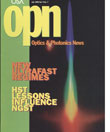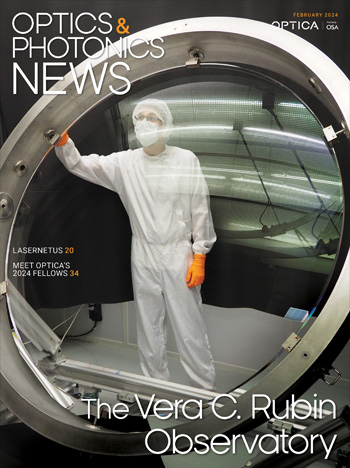
July 1998 Issue
- NASA'S Next Generation Space Telescope: Visiting a Time when Galaxies were Young
- Extrapolating HST Lessons to NGST
- Tabletop, Ultrahigh-Intensity Lasers: Dawn of Nonlinear Relativistic Optics
- Extreme Nonlinear Optics: Exposing Matter to a Few Periods of Light
- SGML
- Reciprocity in Classical Linear Optics
- Wide Angle Shift Lens for 35-mm Format
- Browse all Issues
Feature Articles
NASA'S Next Generation Space Telescope: Visiting a Time when Galaxies were Young
NASA's next great endeavor, a space telescope to study the origin of galaxies, is in its formulative phase. Seery and Smith update readers on the paradigms, processes, and optical parameters of this project.
by Bernard D. Seery and Eric P. SmithExtrapolating HST Lessons to NGST
TO CORRECT FOR PROBLEMS WITH THE ORIGINAL HST OPTICAL SYSTEM, NASA SCIENTISTS USED PHASE RETRIEVAL TECHNIQUES. HOW THAT WAS DONE AND HOW RESULTS FROM THIS RESEARCH LED TO NASA'S DECISION TO USE IT WITH NGST ARE DISCUSSED.
by Richard G. Lyon, J.M. Hollis, John E. Dorband, and Timothy P. MurphyTabletop, Ultrahigh-Intensity Lasers: Dawn of Nonlinear Relativistic Optics
By driving electrons in the relativistic regime, the table-top terawatt (T3) laser has given nonlinear optics a second wind, with applications in particle beam, nuclear, astrophysics, and nonlinear quantum electrodynamics.
by D.P. Umstadter, C. Baity, M. Perry, and G.A. MourouExtreme Nonlinear Optics: Exposing Matter to a Few Periods of Light
Intense light pulses in the single-cycle regime have opened up new avenues in nonlinear optics. These, along with expected impacts on other areas of science and technology, are discussed.
by F. Krausz, T. Brabec, M. Schnürer, and C. SpielmannSGML
Thus warned, we embark on a short article in a Society journal about Standard Generalized Markup Language (SGML). Although you may have never heard of it, SGML is an integral part of your professional life. It's used to print and archive OSA's and other AIP journals; many government and academic organizations use it to disseminate and archive documents. One SGML application, hypertext markup language (HTML), underlies most of the Web pages you view.
by Bob JopsonReciprocity in Classical Linear Optics
A recent informal survey of some optical science colleagues and students revealed that the notion of reciprocity in optics is not widely appreciated. One colleague even justified the prevailing ignorance by drawing a parallel between reciprocity in optics and the correspondence principle in quantum mechanics: "Both are true statements, which have little, if any, practical value in their respective domains." This column is an attempt at explaining the concept of reciprocity, clarifying some associated misconceptions, and pointing out its practical applications.
by Masud MansuripurWide Angle Shift Lens for 35-mm Format
If a tall building is photographed by pointing a camera upward, the vertical lines of the building converge. Large format photographers have long known that it is possible to avoid this problem by shifting the lens vertically upward while keeping the image plane parallel to the building. To do this, the lens must have an image circle that is larger in diameter than the diagonal of the film format. While this is the norm for large format photography, in the realm of the 35-mm system a special lens called a shift lens is required. In addition to having a larger than normal image circle, shift lenses have a special mechanical structure that enables the shifting motion. This mechanical structure requires that the back focal distance be even greater than that normally required for 35-mm SLR lenses. Needless to say, the combination of a larger than normal image circle and back focal distance places great demands on the optical design, and, as a result, shift lenses tend to be a little slower and a lot more expensive than non-shift lenses with the same focal length.
by J. Brian Caldwell
![A multiplexed image of a human tonsil acquired. [NIAID] using the iterative bleaching extends multiplexity (IBEX) method.](https://opnmedia.blob.core.windows.net/$web/opn/media/images/articles/2024/0424/departments/202404-cover-web.jpg?ext=.jpg)

